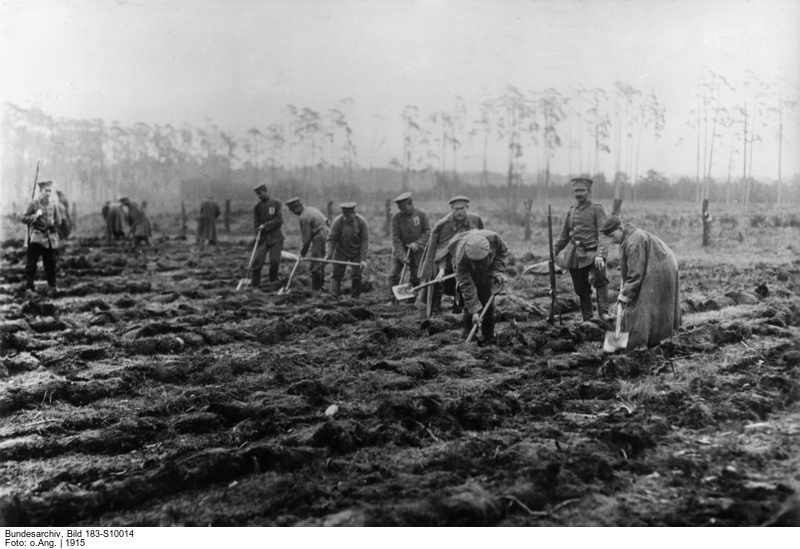Prisoners of War as Forced Laborers during the First World War (April 4, 1915)
Abstract
The mobilization of millions of men for the army and navy during the First World War meant that the demand for labor for the economy, especially in agriculture, could no longer be adequately met. Therefore, prisoners of war were used as replacements. Regular troops and non-commissioned officers could be forced to work according to Article 6 of the Hague Land Warfare Regulations of 1907; officers were excepted. The majority of prisoners of war in Germany during World War I came from Russia, followed by France, Great Britain, Romania and Italy. Most of them were housed in prisoner-of-war camps, later also in private households. This letter gives an impression of the accommodation and treatment of prisoners of war in the district of Meschede, where the men were used for agricultural work.
Source
Letter from the Inspectorate of the Prisoner of War Camp of the XVIIIth Army Corps to the Administrator of Meschede District on the Deployment of Prisoners of War in Industry and Agriculture
Frankfurt a. M., April 4, 1915.
Kettenhofweg 22.
In recent weeks, an intense demand for prisoner of war labor in agriculture as well as industry has developed in the vicinity of the Corps district’s various prisoner of war camps.
The Inspectorate assumes that similar conditions prevail in other areas and districts. In order to meet this demand, and facilitate the supply of prisoners of war where there is or will be a labor shortage because of military conscription, the Inspectorate intends to establish so-called labor camps in the various districts, each under the command of an officer, officer deputy or sergeant, which will be able to meet the demands of the surrounding region, and to which additional men will be sent where necessary from the main camps.
The “labor camps” will house: only healthy prisoners of war, only good-natured prisoners of war who have been vaccinated against smallpox, cholera, and typhus, and who are willing to work. The most important question in the establishment of such “labor camps” is the matter of housing. The Inspectorate is unwilling to build new barracks, since the Empire has already spent many hundreds of thousands for the purpose. We cannot burden the Fatherland with any further expenditure.
Vacant buildings, be they poorhouses or manor houses, gymnasiums, community halls, or empty factories are especially suitable as accommodation for prisoners of war. In many respects, how satisfied prisoners of war are depends on the quality of their lodgings. As a consequence, it is important that the accommodation provides a certain degree of comfort for the prisoner of war workers.
Depending on the size of the lodgings, the “labor camps” could house 30 to 500 prisoners.
Provisioning is to be organized such that each detachment is given several prisoners of war as cooks, and the raw materials will be drawn largely from the vicinity of the camp.
Please respond to the Inspectorate as to whether we can expect your assent to this suggestion, and also whether and which buildings within the district would be suitable as “labor camps.”
[Signature]
Major General and Inspector.
Source: Letter from the Inspectorate of the Prisoner of War Camp of the XVIIIth Army Corps to the Administrator of Meschede District on the Deployment of Prisoners of War in Industry and Agriculture; Landesarchiv NRW Abteilung Westfalen. Available online at: http://www.westfaelische-geschichte.de/que115279
